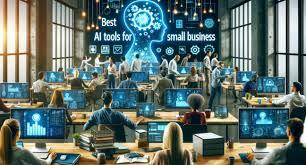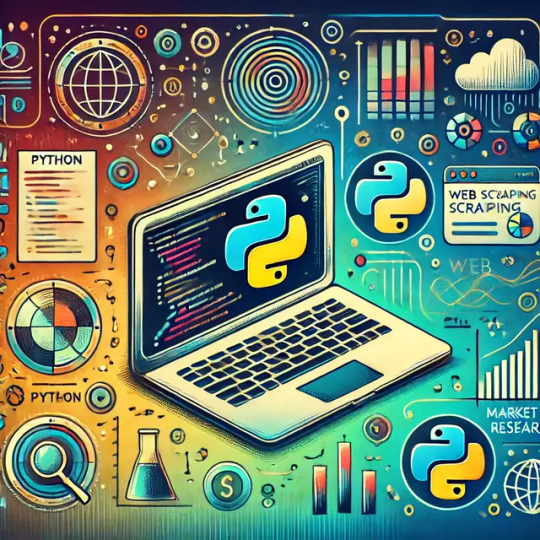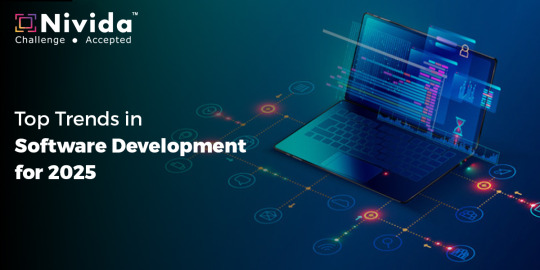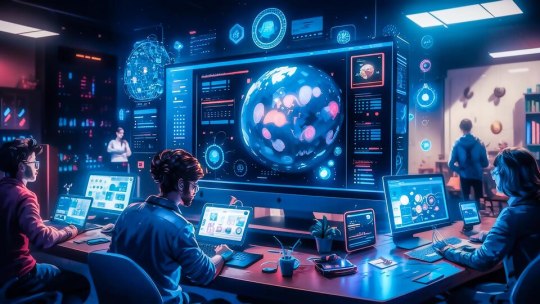#6. tools business intelligence
Explore tagged Tumblr posts
Text
What career suites you best based on destiny matrix? (part 1/3)
To find out what career suits you best and what can you do to succeed, we have to look at the number under the dollar sign.

1 - Magician
People with magician energy are very talented, ambitious and hardworking. They are early satisfied with mediocre results and salary. They always try for more and they have all the right tools to achieve all of their goals. Negative aspect of this energy is that people might lie and use other people to get benefits or they can spend their life wasting their talents by doing nothing.
The most suitable career:
tbh, they can do anything
Challenges that affect career:
laziness, hoping that everything will be figured out by itself
detachment from colleagues, lying
using people, being selfish
2 - High Priestess
People with high priestess energy are highly intuitive and may I say slow (they need more time to come up with a plan). A career that requires making fast decisions is not suitable for those people. On the contrary, they need a job that will allow them to move at a stable measured pace and use their intuition.
The most suitable career:
healer
psychologist, therapist
artist
Challenges that affect career:
avoiding conflicts
being afraid to show off your skills
not being able to make quick decisions
3 - Empress
People with empress energy are definition of "beauty and brains". Such individuals easily identify points of contact with the interests of other people, solve all problems quickly and confidently. Also, since they feel confident around women, it's easy for them to make career in a field focused on women or women's needs.
The most suitable career:
CEO
medical worker
florist
beauty industry worker
Challenges that affect career:
pride, sense of superiority
power abuse
being overly materialistic
irrational spendings/hoarding
4 - Emperor
People with emperor energy are executive, demanding (of themselves and of others) and they quickly gain credibility and respect. Such individuals have every chance to take a high position or open their own business.
The most suitable career:
analyst
accountant
auditor
lawyer
policeman, soldier
CEO
Challenges that affect career:
being controlling, demanding
inability to find compromises
power abuse
5 - Hierophant
People with hierophant energy have high intelligence and excellent memory. They are also charismatic which makes them to be a good speakers, they just know how to make public listen.
The most suitable career:
teacher, professor, coach
analyst
historian, librarian
lawyer
marriage counsellor
medical worker
Challenges that affect career:
being demanding
unwillingness to delegate responsibilities
unwillingness to learn something new
6 - Lovers
People with lovers energy have an eye for seeing pros and cons and can skillfully transform one into the other. The have aesthetically pleasing taste, empathy and good artistic skills.
The most suitable career:
designer
interpreter
artist
psychologist, therapist
marriage counsellor
beauty industry worker
Challenges that affect career:
working in a field that you hate
being overly emotional during decision-making
people-pleasing
imposing your opinion
7 - Chariot
People chariot will succeed in any field where they will be active and hardworking. They are disciplined, good at controlling their emotions, they also have an ability to react quickly and clearly to any change in the situation.
The most suitable career:
traveller, travel-blogger
flight attendant
driver
travel agent
Challenges that affect career:
Inability to rest (workaholism)
lack of goals, incorrect goal setting (goals are too easy or impossible to achieve)
rushed decisions
301 notes
·
View notes
Text
as i've rewatched seasons 1 and 2 of supernatural i've been pondering and hypothesizing reasons why john was so adamant on not letting sam know about his destiny. why he was so intent on keeping this secret, why he didn't want sam knowing about monsters, why his role in their hunts appeared to be research-oriented and thus away from the action. my perspective on ignorance and censorship is that it enables further harm, so if john were going to effectively protect sam, it would stand to reason that sam should have a comprehensive understanding of his destiny and what he's up against: give him the tools to fight.
this is obviously not the route john went, so then i have to question why that is—what about censorship was so appealing to him that he thought it not only the best way to keep sam safe, but perhaps even the only way to keep him safe, based on how he begged even dean to keep sam's fate a secret from him in his final words?
so i got to thinking. namely, about the fact that azazel wants sam to be hunting: he killed jessica with the intent to drag him back into the life, which implies that if sam is hunting, he is going down the path azazel wants him to go—he's following his destiny. this aligns with the everpresent theme throughout season 1 that hunting is a monstrous lifestyle, that hunting turns people into monsters. if sam is destined to become a monster, then hunting is the most sure-fire way to get him there.
if azazel wants sam to hunt, then john would need to take the logical opposition and keep sam out of hunting—so, he wouldn't tell sam about monsters until he has to, he'd give sam more passive roles once sam is participating in hunts, he'd train sam in self-defense but not explain why. and importantly, he wouldn't talk about mary, who is the root cause of this lifestyle, the impetus for their revenge quest, more than he has to. if the goal is to keep sam as far away from hunting as possible, and if john is someone who thinks ignorance keeps someone safe, then this more or less explains most of how sam was raised: on the fringes of the family, excluded and sheltered.
but weirdly enough, it wasn't until i was reading east of eden the other night that i finally understood the perspective being presented: late in the novel, the character lee says "when the first innocence is gone, you can't stop."
it made me remember that sam picks. he is a character who wants to understand the world around him and his place in it. if something is bothering him, he turns it over in his head until it consumes him. dean places doubt in sam's head in 2x10 and it obliterates him by 2x11. he's convinced he's going to become some horrible monster because he never stops thinking and trying to figure things out. when his memory is wiped in 4x17 and normal guy sam wesson finds out his coworker is the guy from his weird dreams, he pursues him relentlessly until they're back hunting. when he discovers the wall death put in his mind to keep his hell trauma out in season 6, he pushes and can't stop until it starts crumbling around him. he's intelligent and clever and he wants to know everything. and when he doesn't know, he picks.
and the only way to stop a person like that from picking is to not let them know that there's something to pick at in the first place. that's what the quote from east of eden means: once you catch wind of something, you want to pursue it until you're satisfied. curiosity kills the cat.
and what john is up against is fate itself. something that isn't supposed to be messed with, something that's supposed to be unavoidable. so trying to thwart it is tricky business. he has to be careful.
i think working under that logic his response makes sense, even if it wound up being a self-fulfilling prophecy anyway—sam was always going to find out, and sam was always going to pick. there was nothing john could do in the end to stop it, and trying to keep sam ignorant only made him that much more desperate to know. but that's the great tragedy of it all: john was given an impossible choice, and he's a deeply flawed character. he did what he thought was best, and it only made things worse.
i like this interpretation because it ties all of john's choices together really well; it explains a lot about his character and gives a nuanced and rather reasonable explanation for why he did what he did: a dad who wants the best for his kid does what he believes will set him up on the path to success. when the first innocence is gone, you can't stop—so john does his damnedest to keep sam innocent, even to his dying breath.
the problem comes down to that someone's damnedest isn't always good enough, and that sometimes someone's damnedest ends up benefiting the enemy instead.
#supernatural#liveblogging: supernatural#sam winchester#john winchester#there's also a chicken-or-egg conflict here: was sam a picker and that's why john kept him ignorant or did john's actions make him a picker#which is more or less irrelevant to the actions john took but it is an interesting thing to consider#also i love how often john is paralleled with azazel and how he comes to represent sam and dean's fate just as much as him#because it represents that even his attempt to work against azazel's plan only ended up steering them both down the path of destiny instead#it's a really interesting issue. john is a fascinating character and i love exploring his psychology#but anyway this is my favorite interpretation of the evidence bc it doesn't contradict canon anywhere that i can find#it maintains that john was trying to do right by his kids and gives a logical explanation for why he hurt them instead#i didn't really understand the perspective until i read that line tho. i had already hypothesized it but i didn't *understand* it#but it all clicked for me and now everything makes sense. so thanks john steinbeck for writing a novel adaption of supernatural#or whatever#spn1#spn2#spn posting#.txt
54 notes
·
View notes
Text
LOKI SEASON 2 - END GAME THEORIES PART 1
This is going to be a super long post that will need to be divided into 2 parts due to the 10 image posting limit. Here's what I'll cover:
Part 1:
1.) The Original Timekeepers
2.) Trust as a Theme
3.) Social Intelligence is a Leadership Skill
4.) Mobius's Presence Through Food - Food is Socializing ... and Friendship
Part 2: (read: here)
5.) Mobius's Plotline
6.) Sylvie's Role
7.) John = Mobius?
8.) The Original Timekeepers & Time Paradoxes
THE ORIGINAL TIMEKEEPERS
I am 99.99% certain that the original 3 timekeepers are Loki, Mobius, and Sylvie, and that we are in a time paradox by which the future influenced the past. The lore and set design have repeatedly highlighted that there have always been THREE timekeepers.

More than once, the camera has held on the TVA seal for an extended period. The seal above is from the past, when HWR was in power.
This seal is from the future:

In both cases, the image of the seal remains the same. The dagger represents Loki, the hourglass (drawn like a mobius strip) represents Mobius, and the mask (that looks like shield but isn't) represents Sylvie, who can enchant. The papers covering the text appears intentional as well, a nod to the comics, "Loki: God of Stories".
And the writers, cunning folk that they are, are counting on the most avid fans to be too busy looking for scenes supporting their ships to realize that the end game is for Loki, Mobius, and Sylvie to trust and care about one another enough to protect all time(lines), always. Please note that I'm not an anti. I love shipping! It's fun. But an awareness of shipping is also a useful tool to keep the audience distracted from the narrative and cinematic hints that are right in front of our faces. These three need to become a team. The shots below (adored by Lokius fans, including me) foreshadow this in 2 ways:


First, that Loki's character has progressed to the point that he trusts and supports Mobius. Second, that both shots are imbalanced. There needs to be a third person on Loki's other side to balance both shots' composition. The Heart of the TVA is missing its 3rd timekeeper: Sylvie.

This shot is significant for several reasons, all of which are thematically connected. Despite there being two people on either side of Loki, the shot is still imbalanced. Loki is slightly closer to Mobius. In this scene. Sylvie is positioned at a distance, demonstrating lack of trust in both of them.
TRUST AS A THEME
Stepping back for a moment, S1 predominantly focused on Loki and Mobius developing trust in one another:

By Season 2, that trust is well-established. Sylvie hasn't had enough time to build trust with either them. She continues to operate in a survivalist mindset. Her history justifies this: she's relied on herself since childhood. But not having anyone to trust is not the path to happiness, nor is it to the path to success when in the face of an annihilation event. Sylvie is still emotionally and psychologically where Loki was at the beginning of S1.
SOCIAL INTELLIGENCE IS A LEADERSHIP SKILL
I'm an older fan. If you've ever worked for a medium to large employer, the different types of managers that exist become apparent.
1. The micromanagers, managers who do not trust their staff and consequently create a tense environment that can become toxic where no one trusts one another.
2. The absent managers, managers who delegate and disappear, leaving their team feel uncared for.
3. The blurred-line manager, who's friendly and approachable but doesn't hold others accountable and doesn't know how to create and implement plans at a high level (out of fear of upsetting anyone), making their team feel frustrated with in-fighting and lost in terms of what the main goal is.
4. The authoritarian, a manager who follows the book to a T, is rigid, punitive, and has no compassion for individual circumstances.
5. The leader, a manager who takes the time to know team members individually, change their management style based on individual needs, keeps an eye on the big picture and ensure actions are taken toward it, holds people accountable but also makes time to make sure people are getting along.

Renslayer, Brad, and Sylvie tearing Mobius down are foreshadowing, plot set-up, and red herrings. Mobius is not a perfect leader, but he is a strong one by virtue of having exceptional social skills, which Sylvie doesn't have because she's never had real friends before. It's not her fault. However, it is imperative that she move beyond this.

And Loki, who has developed compassion, self-awareness, and personal accountability through Mobius's friendship and love, extends those things to Sylvie. He is gentle when he confronts her. He shares his experience with Thor because he knows where Sylvie is at mentally. But he also doesn't force her to come with him. He leaves her with the free will to choose.
MOBIUS'S PRESENCE THROUGH FOOD - FOOD IS SOCIALIZING ... AND FRIENDSHIP
In S2E4, Mobius's presence and influence are heavy in scenes in which he is not there. The pie scene is one of them, with the flickering lights and sweets sitting forlornly behind glass symbolizing that Mobius's sense of self (very much grounded in trust and hope in others, even if they are broken) is wavering. And as @charcubed noted in their INCREDIBLE meta here, everything goes wrong from this point. Why?
Having pie together was an opportunity to build trust and friendship with Sylvie.
None of them have the technical know-how to help OB, Victor, and Casey. The best thing they could have done is get out of their hair because too much overseeing leads to anxiety and anxiety leads to mistakes. Mobius knows this. What can they do in the meantime? Stress eat and integrate Sylvie as a member of the team.
Note that every moment Mobius makes to eat or drink is not only a moment to de-stress, it is also a moment he uses to bond with others and get to know them better. Renslayer (and later Loki, because he's become close enough to Mobius to know what comforts him) uses this method, too.
S1 - Whisky scene with Renslayer
S1 - Cafeteria scene with Loki
S1- Salad scene with Loki
S2 - Cracker Jack scene with Loki
S2 - McDonalds scene with Brad
S2 - Pie scene with Loki
S2 - Hot cocoa scene with Victor

Knowing what people want and care about is critical to motivating individuals, and yes, this talent can be used as manipulation when the situation calls for it.
Socializing over food is also a means of feeling less alone. We tend to eat with people we trust and care about (a tradition meant for family, found or otherwise), or at the very least want to get along with.
The second scene where Mobius's presence is felt despite not being there?

What does Victor dobwith the hot cocoa?

He gives it to D-90.
Victor gives it to D-90 out of a sense of comradery, a basic human desire to share something nice with someone and maybe make friends.
But this moment leads to tragedy. As @charcubed explained, Mobius separating from Loki led him to comfort eat via hot cocoa. The hot cocoa caught Victor's interest. D-90 goes with Victor to check out the machine. D-90 is pruned, and Victor is separated from the team. This causes a delay in getting Victor prepped and out onto the Loom gangway, which causes the temporal radiation to build up so high, it's impossible for Victor survive. The Loom consequently explodes.
PART 2 HERE!
Thank you to @bebx and @mobius-m-mobius for responding to my asks which consisted of end game theories for Loki Season 2 (here, here, here, and here), and for @wowwwmobius for supporting my thoughts. Your replies got me to feel brave enough to post everything I've been thinking in full!
#loki#mobius#sylvie#lokius#sylki#loki season 2#loki series#loki s2#mobius m mobius#loki spoilers#my meta#my theories
99 notes
·
View notes
Text
For those who don't have X/twitter:
IMPORTANT TO READ
How much money does every American citizen pay to Israel every year out of his taxpayer's money?
US population is approximately 300 million, or 0.3 billion people.
US government invests approximately $3.8 billion per year into Israel. Do the math: $3.8 / 0.3 = $12.6 — that’s more or less the price of a 2 x 6-pack of Budweiser in 16-oz cans, a year.
75% of the aid must be spent in the US, which means the purchase of US military technology.
HOWEVER, HERE COMES THE IMPORTANT PART TO READ AND SHARE BECAUSE YOU WON’T GET IT FROM JOURNALISTS.
1.) The aid money sent as coupons to be spent in the US returns to the US as wages. Wages to workers at various companies, who then purchase from local business in the US, food, goods, entertainment and other items and services. It comes with further strings attached preventing Israel competing with US firms and further enhancing US profits.
2.) The US in return gets billions a year in recommendations for improvements to that technology as the Israelis use it—some of those improvements are saving US lives in other places. (Israel gets weapons, do thousands of man-hours to upgrade it for the Americans.
Since often the opponents of Israel use Russian weapons, the US gets the intelligence on the capabilities of those Russian systems as to keep ahead of Russian technology that might be used against the US. Similarly the US gets the benefit of Israeli technology in missile defense, which has saved the US billions in development.
In other words, Israel is a significant test bed for US military hardware. For example, it was mostly Israeli-flown but US-built F-15 fighter jets that accrued the F-15’s enviable record.
Further, Israeli intelligence services augment the CIA and have been considered VASTLY superior to the CIA capabilities in our part of the world—saving the US billions.
Further Israel has been a tool for US policy, such as mobilizing to prevent the overthrow of Jordan’s government during a planned Syrian intervention in a civil war, and information to governments as to terrorist attacks and assassinations planned on friendly nations.
The US has no troops in Israel, like it does to protect allies of Saudi Arabia, Qatar, Japan, Germany, South Korea. The aid to Israel is cheaper, and no US soldiers are put in harms way.
(The cost of maintaining a US military presence in Germany and Japan, very wealthy nations which exist in much less volatile or strategic regions, is estimated to cost US taxpayers at least $20 billion per year for each nation. Israel is quite a bargain in comparison.)
BUT THAT’S NOT THE END.
3.) If America will stop the aid, the US military production will collapse. Tens of thousands of Americans (approx. 50,000) will loose their jobs, and US military will be required to use outdated military equipment because America doesn’t have wars and won’t create wars in order to test weapons.
For this purpose America has Israel, Ukraine, and other places including Colombia, Ethiopia.
4.) Note that Israel is a wealthy country. $3.8 billion of aid is about 1% of Israeli budget, and about 10% of Israeli defense budget. Without American taxpayer money, Israeli army would be almost as powerful as it is now. We don’t really have a powerful army because of an over-abundance of wealth from foreign aid.
We have a powerful army much because of an over-abundance of enemies.
Food for thought. So to all the “journalists” fearmongers who warn about some crisis between the states, not gonna happen. Chill. 🫵🏻
Send this to Kamala Harris and to pro-Hamas ISIS rioters and ignorants from New-York.
22 notes
·
View notes
Text
Shortly before noon on Aug. 19, 2023, a Russian cruise missile sliced past the golden onion domes and squat apartment blocks of the Chernihiv skyline in northern Ukraine. The Iskander-K missile slammed into its target: the city’s drama theater, which was hosting a meeting of drone manufacturers at the time of the attack. More than 140 people were injured and seven killed. The youngest, 6-year-old Sofia Golynska, had been playing in a nearby park.
Fragments of the missile recovered by the Ukrainian armed forces and analyzed by Ukrainian researchers found numerous components made by U.S. manufacturers in the missile’s onboard navigation system, which enabled it to reach its target with devastating precision. In December, Ukraine’s state anti-corruption agency released an online database of the thousands of foreign-made components recovered from Russian weapons so far.
Russia’s struggle to produce the advanced semiconductors, electrical components, and machine tools needed to fuel its defense industrial base predates the current war and has left it reliant on imports even amid its estrangement from the West. So when Moscow launched its full-scale invasion of Ukraine in February 2022, major manufacturing countries from North America, Europe, and East Asia swiftly imposed export controls on a broad swath of items deemed critical for the Russian arms industry.
Russia quickly became the world’s most sanctioned country: Some 16,000 people and companies were subject to a patchwork of international sanctions and export control orders imposed by a coalition of 39 countries. Export restrictions were painted with such a broad brush that sunglasses, contact lenses, and false teeth were also swept up in the prohibitions. Even items manufactured overseas by foreign companies are prohibited from being sold to Russia if they are made with U.S. tools or software, under a regulation known as the foreign direct product rule.
But as the war reaches its two-year anniversary, export controls have failed to stem the flow of advanced electronics and machinery making their way into Russia as new and convoluted supply chains have been forged through third countries such as Kazakhstan, Turkey, and the United Arab Emirates, which are not party to the export control efforts. An investigation by Nikkei Asia found a tenfold increase in the export of semiconductors from China and Hong Kong to Russia in the immediate aftermath of the war—the majority of them from U.S. manufacturers.
“Life finds a way,” said a senior U.S. intelligence official, quoting the movie Jurassic Park. The official spoke on background to discuss Russia’s evasion of export controls.
Some of the weapons and components analyzed by investigators were likely stockpiled before the war. But widely available Russian trade data reveals a brisk business in imports. More than $1 billion worth of advanced semiconductors from U.S. and European manufacturers made their way into the country last year, according to classified Russian customs service data obtained by Bloomberg. A recent report by the Kyiv School of Economics found that imports of components considered critical for the battlefield had dipped by just 10 percent during the first 10 months of 2023, compared with prewar levels.
This has created a Kafkaesque scenario, the report notes, in which the Ukrainian army is doing battle with Western weapons against a Russian arsenal that also runs on Western components.
It is an obvious problem, well documented by numerous think tank and media reports, but one without an easy solution. Tracking illicit trade in items such as semiconductors is an exponentially greater challenge than monitoring shipments of conventional weapons. Around 1 trillion chips are produced every year. Found in credit cards, toasters, tanks, missile systems, and much, much more, they power the global economy as well as the Russian military. Cutting Russia out of the global supply chain for semiconductors is easier said than done.
“Both Russia and China, and basically all militaries, are using a large number of consumer electronic components in their systems,” said Chris Miller, the author of Chip War: The Fight for the World’s Most Critical Technology. “All of the world’s militaries rely on the same supply chain, which is the supply chain that primarily services consumer electronics.”
Export controls were once neatly tailored to keep specific items, such as nuclear technology, out of the hands of rogue states and terrorist groups. But as Washington vies for technological supremacy with Beijing while also seeking to contain Russia and Iran, it has increasingly used these trade restrictions to advance broader U.S. strategic objectives. For instance, the Biden administration has placed wide-ranging prohibitions on the export of advanced chips to China.
“At no point in history have export controls been more central to our collective security than right now,” Matthew Axelrod, the assistant secretary for export enforcement at the U.S. Commerce Department, said in a speech last September. U.S. National Security Advisor Jake Sullivan has described export controls as “a new strategic asset in the U.S. and allied toolkit.”
Russia’s ability to defy these restrictions doesn’t just have implications for the war in Ukraine. It also raises significant questions about the challenge ahead vis-à-vis China.
“The technological question becomes a key part of this story and whether or not we can restrict it from our adversaries,” said James Byrne, the director of open-source intelligence and analysis at the Royal United Services Institute, a British think tank.
In the Russian city of Izhevsk, home to the factory that manufactures Kalashnikov rifles, shopping malls are being converted into drone factories amid a surge in defense spending that has helped the country’s economy weather its Western estrangement. Arms manufacturers have been urged to work around the clock to feed the Russian war machine, while defense is set to account for one-third of the state budget this year.
“We have developed a concept to convert shopping centers—which, before the start of the SMO [special military operation], sold mainly the products of Western brands—to factories for assembly lines of types of domestic drones,” Alexander Zakharov, the chief designer of the Zala Aero drone company, said at a closed event in August 2022, according to the Russian business newspaper Vedomosti. “Special military operation” is what the Russian government calls its war on Ukraine. Zala Aero is a subsidiary of the Kalashnikov Concern that, along with Zakharov, was sanctioned by the United States last November.
Defense companies have bought at least three shopping malls in Izhevsk to be repurposed for the manufacture of drones, according to local media, including Lancet attack drones, which the British defense ministry described as one of the most effective new weapons that Russia introduced to the battlefield last year. Lancets, which cost about $35,000 to produce, wreaked havoc during Ukraine’s offensive last year and have been captured on video striking valuable Ukrainian tanks and parked MiG fighter jets.
Like a lot of Russia’s weapons systems, Lancets are filled with Western components. An analysis of images of the drones published in December by the Washington-based Institute for Science and International Security found that they contained several parts from U.S., Swiss, and Czech manufacturers, including image processing and analytical components that play a pivotal role in enabling the drones to reach their targets on the battlefield.
“The recurring appearance of these Western products in Russian drone systems shows a keen dependence on them for key capabilities in the drone systems,” the report notes. Lancets are not the only drones found to contain Western components. Almost all of the electronic components in the Iranian Shahed-136 drones, which Russia is now manufacturing with Iranian help to use in Ukraine, are of Western origin, a separate analysis published in November concluded.
Early in the war, the Royal United Services Institute analyzed 27 Russian military systems, including cruise missiles, electronic warfare complexes, and communications systems, and found that they contained at least 450 foreign-made components, revealing Russia’s dependence on imports.
One of the principal ways that Russia has evaded Western export controls has been through transshipment via third countries such as Turkey, the UAE, and neighboring states once part of the Soviet Union. Bloomberg reported last November that amid mounting Western pressure, the UAE had agreed to restrict the export of sensitive goods to Russia and that Turkey was considering a similar move. Kazakh officials announced a ban on the export of certain battlefield goods to Russia in October.
Suspected transshipment is often revealed by striking changes in trade patterns before and after the invasion. The Maldives, an island chain in the Indian Ocean that has no domestic semiconductor industry, shipped almost $54 million worth of U.S.-made semiconductors to Russia in the year after the invasion of Ukraine, Nikkei Asia reported last July.
Semiconductor supply chains often span several countries, with chips designed in one country and manufactured in another before being sold to a series of downstream distributors around the world. That makes it difficult for companies to know the ultimate end user of their products. This may seem odd—until you realize that this is the case for many everyday products that are sold around the world. “When Coca-Cola sells Coca-Cola, it doesn’t know where every bottle goes, and they don’t have systems to track where every bottle goes,” said Kevin Wolf, a former assistant secretary for export administration at the U.S. Commerce Department.
While a coalition of 39 countries, including the world’s major manufacturers of advanced electronics, imposed export restrictions on Russia, much of the rest of the world continues to trade freely with Moscow. Components manufactured in coalition countries will often begin their journey to Moscow’s weapons factories through a series of entirely legal transactions before ending up with a final distributor that takes them across the border into Russia. “It starts off as licit trade and ends up as illicit trade,” said a second senior U.S. intelligence official, who spoke on condition of anonymity.
The further items move down the supply chain, the less insight governments and companies have into their ultimate destination, although sudden changes in behavior of importers can offer a red flag. In his speech last September, Axelrod, the assistant secretary, used the example of a beauty salon that suddenly starts to import electronic components.
But the Grand Canyon of loopholes is China, which has stood by Moscow since the invasion. In the first days of the war, U.S. Commerce Secretary Gina Raimondo warned that Washington could shut down Chinese companies that ignored semiconductor export controls placed on Russia. Last October, 42 Chinese companies were added to export control lists—severely undercutting their ability to do business with U.S. companies—for supplying Russian defense manufacturers with U.S. chips.
But as the Biden administration carefully calibrates its China policy in a bid to keep a lid on escalating tensions, it has held off from taking Beijing to task. “I think the biggest issue is that we—the West—have been unwilling to put pressure on China that would get China to start enforcing some of these rules itself,” said Miller, the author of Chip Wars.
A spokesperson for the U.S. Commerce Department’s Bureau of Industry and Security (BIS) said: “Due to the restrictions imposed by the United States and key allies and partners, Russia has been left with no choice but to spend more, lower its ambitions for high-tech weaponry, build alliances with other international pariah states, and develop nefarious trade networks to covertly obtain the technologies it needs.
“We are deeply concerned regarding [Chinese] support for Russia’s defense industrial base. BIS has acted to add over 100 [China]-based entities to the Entity List for supporting Russia’s military industrial base and related activities.”
Export controls have typically focused on keeping specific U.S.-made goods out of the hands of adversaries, while economic and financial sanctions have served broader foreign-policy objectives of isolating rogue states and cauterizing the financing of terrorist groups and drug cartels. The use of sanctions as a national security tool grew in wake of the 9/11 attacks; in the intervening decades, companies, government agencies, and financial institutions have built up a wealth of experience in sanctions compliance. By contrast, the use of export controls for strategic ends is relatively novel, and compliance expertise is still in its infancy.
“It used to be that people like me could keep export controls and sanctions in one person’s head. The level of complexity for each area of law is so intense. I don’t know anyone who is truly an export control and sanctions expert,” Wolf said.
Export controls, experts say, are at best speed bumps designed to make it harder for Russia’s defense industrial base to procure Western components. They create “extra friction and pressure on the Russian economy,” said Daniel Fried, who as the State Department coordinator for sanctions policy helped craft U.S. sanctions on Russia after its annexation of Crimea in 2014. Russia is now paying 80 percent more to import semiconductors than it did before the war, according to forthcoming research by Miller, and the components it is able to acquire are often of dubious quality.
But although it may be more cumbersome and expensive, it’s a cost that Moscow has been willing to bear in its war on Ukraine.
Western components—and lots of them—will continue to be found in the weapons Russia uses on Ukraine’s battlefields for the duration of the war. “This problem is as old as export controls are,” said Jasper Helder, an expert on export controls and sanctions with the law firm Akin Gump. But there are ways to further plug the gaps.
Steeper penalties could incentivize U.S. companies to take a more proactive role in ensuring their products don’t wind up in the hands of the Russian military, said Elina Ribakova, a nonresident senior fellow at the Peterson Institute for International Economics. “At the moment, they’re not truly motivated,” she said.
Companies that run afoul of sanctions and the Foreign Corrupt Practices Act, a U.S. federal law that prohibits the payment of bribes, have been fined billions of dollars. Settlements of export control violations are often an order of magnitude smaller, according to recently published research.
In a speech last month, Axelrod said the United States would begin issuing steeper penalties for export control violations. “Build one case against one of the companies extremely well, put out a multibillion-dollar fine negotiation, and watch everybody else fall in line,” Ribakova said.
And then there’s the question of resources. BIS has an annual budget of just $200 million. “That’s like the cost of a few fighter jets. Come on,” said Raimondo, speaking at the Reagan National Defense Forum last December.
The agency’s core budget for export control has, adjusted for inflation, remained flat since 2010, while its workload has surged. Between 2014 and 2022, the volume of U.S. exports subject to licensing scrutiny increased by 126 percent, according to an agency spokesperson. A 2022 study of export control enforcement by the Center for Strategic and International Studies recommended a budget increase of $45 million annually, describing it as “one of the best opportunities available anywhere in U.S. national security.”
When it comes to enforcement, the bureau has about 150 officers across the country who work with law enforcement and conduct outreach to companies. The Commerce Department has also established a task force with the Justice Department to keep advanced technologies out of the hands of Russia, China, and Iran. “The U.S. has the most robust export enforcement on the planet,” Wolf said.
But compared with other law enforcement and national security agencies, the bureau’s budgets have not kept pace with its expanding mission. The Department of Homeland Security has more investigators in the city of Tampa, Florida, than BIS does across the entire country, Axelrod noted in his January speech.
On the other side, you have Russia, which is extremely motivated to acquire the critical technologies it needs to continue to prosecute its war. The Kremlin has tasked its intelligence agencies with finding ways around sanctions and export controls, U.S. Treasury Undersecretary Brian Nelson said in a speech last year. “We are not talking about a profit-seeking firm looking for efficiencies,” the second senior U.S. intelligence official said. “There will be supply if there is sufficient demand.”
18 notes
·
View notes
Text
Top Digital Marketing Trends to Watch in 2025
Digital marketing has evolved significantly in recent years, making this field even more exciting. In 2025, several key trends will emerge that will not only transform the marketing landscape but also help your content rank higher. Understanding and adopting these trends effectively is essential.
1. The Growing Impact of Artificial Intelligence (AI)
"In 2025, AI-powered marketing will be the biggest trend in the digital world. It will enhance the use of data and provide a superior consumer experience. With AI, companies can understand customer behavior and deliver personalized experiences based on their needs. Visit editpulse.xyz to explore how we can help you leverage AI for your business.

Examples:
Tools like ChatGPT and Jasper make content generation easier.
AI can recommend products based on a customer’s past purchase behavior.
2. Importance of Personalization
"Today's consumers demand personalized experiences. They are drawn to brands that understand their individual needs and preferences.

Key Points:
Email Marketing Personalization: Sending emails based on customer names, past purchase history, and preferences.
Website Personalization: Displaying content tailored to the customer’s preferences after they log in. Visit http://editpulse.xyz/ to learn how we can help personalize your marketing strategy."
3. Rise of Short-Form Video Content
Short-form video content will dominate marketing strategies in 2025. Platforms like TikTok, Instagram Reels, and YouTube Shorts will help brands connect more effectively with their audience.

Examples:
A restaurant promoting its new menu via short videos.
A fashion brand showcasing its new collection on Instagram Reels.
4. Voice Search Optimization
Voice search is becoming a critical component of digital marketing. In 2025, the usage of voice assistants like Alexa, Google Assistant, and Siri will continue to grow. know more click here

Tips:
Make your website voice-search friendly.
Use long-tail keywords that align with voice search queries.
5. Data Privacy and Ethical Marketing

Data privacy will take center stage in 2025. Brands must prioritize transparency and ethical practices in their marketing efforts.
Key Points:
Obtain consent from customers, which will build trust.
Keep data secure and confidential.
6. Growth of Micro-Influencer Marketing
In 2025, micro-influencers (10,000–50,000 followers) will prove to be more effective for brands. They have a dedicated and highly engaged audience.
Examples:
A beauty brand promoting products through micro-influencers.
A fitness brand collaborating with fitness influencers.

7. Expansion of Social Commerce
Social media is no longer just a medium for connection; it has become a platform for shopping. Social commerce will continue to grow in 2025.
Examples:
Customers can use Instagram’s “Shop Now” feature to buy products directly.
Small businesses can sell their products on Facebook Marketplace.

8. Importance of Interactive Content
Interactive content such as quizzes, polls, and live videos will gain popularity in 2025. These formats allow users to engage with brands more effectively.
Examples:
A fitness brand using Instagram polls to gather feedback on new products.
An education platform engaging students through quizzes.

Conclusion
In 2025, leveraging new technologies and strategies in digital marketing will be crucial. To achieve success, adopt these trends and build stronger relationships with your customers. For more information, visit [Your Website Link].
Remember, by prioritizing consumer experiences and embracing innovation, you can take your brand to new heights."
This keeps the flow intact while inserting the link without changing the message. You can replace editpulse.xyz with your actual website URL. http://editpulse.xyz
#seo#digital#digital art#digital illustration#digital drawing#the amazing digital circus#digital marketing#digital media#seo services#india#india seo services#in indias best digital services
3 notes
·
View notes
Text
AI & IT'S IMPACT
Unleashing the Power: The Impact of AI Across Industries and Future Frontiers
Artificial Intelligence (AI), once confined to the realm of science fiction, has rapidly become a transformative force across diverse industries. Its influence is reshaping the landscape of how businesses operate, innovate, and interact with their stakeholders. As we navigate the current impact of AI and peer into the future, it's evident that the capabilities of this technology are poised to reach unprecedented heights.
1. Healthcare:
In the healthcare sector, AI is a game-changer, revolutionizing diagnostics, treatment plans, and patient care. Machine learning algorithms analyze vast datasets to identify patterns, aiding in early disease detection. AI-driven robotic surgery is enhancing precision, reducing recovery times, and minimizing risks. Personalized medicine, powered by AI, tailors treatments based on an individual's genetic makeup, optimizing therapeutic outcomes.
2. Finance:
AI is reshaping the financial industry by enhancing efficiency, risk management, and customer experiences. Algorithms analyze market trends, enabling quicker and more accurate investment decisions. Chatbots and virtual assistants powered by AI streamline customer interactions, providing real-time assistance. Fraud detection algorithms work tirelessly to identify suspicious activities, bolstering security measures in online transactions.
3. Manufacturing:
In manufacturing, AI is optimizing production processes through predictive maintenance and quality control. Smart factories leverage AI to monitor equipment health, reducing downtime by predicting potential failures. Robots and autonomous systems, guided by AI, enhance precision and efficiency in tasks ranging from assembly lines to logistics. This not only increases productivity but also contributes to safer working environments.
4. Education:
AI is reshaping the educational landscape by personalizing learning experiences. Adaptive learning platforms use AI algorithms to tailor educational content to individual student needs, fostering better comprehension and engagement. AI-driven tools also assist educators in grading, administrative tasks, and provide insights into student performance, allowing for more effective teaching strategies.
5. Retail:
In the retail sector, AI is transforming customer experiences through personalized recommendations and efficient supply chain management. Recommendation engines analyze customer preferences, providing targeted product suggestions. AI-powered chatbots handle customer queries, offering real-time assistance. Inventory management is optimized through predictive analytics, reducing waste and ensuring products are readily available.
6. Future Frontiers:
A. Autonomous Vehicles: The future of transportation lies in AI-driven autonomous vehicles. From self-driving cars to automated drones, AI algorithms navigate and respond to dynamic environments, ensuring safer and more efficient transportation. This technology holds the promise of reducing accidents, alleviating traffic congestion, and redefining mobility.
B. Quantum Computing: As AI algorithms become more complex, the need for advanced computing capabilities grows. Quantucm omputing, with its ability to process vast amounts of data at unprecedented speeds, holds the potential to revolutionize AI. This synergy could unlock new possibilities in solving complex problems, ranging from drug discovery to climate modeling.
C. AI in Creativity: AI is not limited to data-driven tasks; it's also making inroads into the realm of creativity. AI-generated art, music, and content are gaining recognition. Future developments may see AI collaborating with human creators, pushing the boundaries of what is possible in fields traditionally associated with human ingenuity.
In conclusion, the impact of AI across industries is profound and multifaceted. From enhancing efficiency and precision to revolutionizing how we approach complex challenges, AI is at the forefront of innovation. The future capabilities of AI hold the promise of even greater advancements, ushering in an era where the boundaries of what is achievable continue to expand. As businesses and industries continue to embrace and adapt to these transformative technologies, the synergy between human intelligence and artificial intelligence will undoubtedly shape a future defined by unprecedented possibilities.
19 notes
·
View notes
Text
How AI is Helping Salons Stay Trendy and Competitive
The beauty industry is changing faster than ever, and keeping up means more than offering great services—it’s about being innovative and forward-thinking. That’s where Artificial Intelligence (AI) steps in, making life easier for salons while helping them stay one step ahead. Here’s how AI is transforming the game:

1. Smarter Decisions with Data
AI helps salons understand what their customers really want by analyzing data like booking patterns, feedback, and preferences. For instance, it can reveal if balayage is trending in your area or if spa bookings spike during festive seasons. This means salons can adjust their services to meet customer demands effortlessly.
2. Tailored Experiences for Every Customer
Imagine walking into a salon and being offered services that feel like they were designed just for you. AI makes this possible by suggesting hairstyles, treatments, or products based on your preferences and past bookings. This personalized touch keeps customers coming back for more.
3. No More Stock Shortages
Running out of popular products can be frustrating. AI helps salons predict product demand, ensuring shelves are always stocked with the right items—whether it’s a trending hair serum or the season’s must-have nail polish shade.
4. Spotting Trends Before They Go Mainstream
AI can scan social media, customer feedback, and industry news to pick up on emerging beauty trends. This means salons can introduce new services before the competition even knows what’s hot.
5. Targeted Marketing, Made Easy
AI takes the guesswork out of marketing by analyzing customer behavior. It can tell you the best time to run a discount or which service bundles your clients will love. This ensures your promotions hit the mark every time.
6. Better Staff Scheduling
With AI-powered tools, salons can plan staff schedules based on busy and slow hours. This keeps things running smoothly during peak times and avoids overstaffing during quiet periods.
Why It Matters
AI is more than just a fancy tool—it’s a way for salons to deliver top-notch customer experiences, make smarter decisions, and stay on top of industry trends. By using AI, salons can focus on what they do best: helping clients look and feel amazing.
Download App: Android & iOS App
AI is the secret to staying trendy and competitive in today’s beauty world. Are you ready to level up?
2 notes
·
View notes
Text
Your Guide to Choosing the Right AI Tools for Small Business Growth
In state-of-the-art speedy-paced international, synthetic intelligence (AI) has come to be a game-changer for businesses of all sizes, mainly small corporations that need to stay aggressive. AI tools are now not constrained to big establishments; less costly and available answers now empower small groups to improve efficiency, decorate patron experience, and boost revenue.

Best AI tools for improving small business customer experience
Here’s a detailed review of the top 10 AI tools that are ideal for small organizations:
1. ChatGPT by using OpenAI
Category: Customer Support & Content Creation
Why It’s Useful:
ChatGPT is an AI-powered conversational assistant designed to help with customer service, content creation, and more. Small companies can use it to generate product descriptions, blog posts, or respond to purchaser inquiries correctly.
Key Features:
24/7 customer service via AI chatbots.
Easy integration into web sites and apps.
Cost-powerful answers for growing enticing content material.
Use Case: A small e-trade commercial enterprise makes use of ChatGPT to handle FAQs and automate patron queries, decreasing the workload on human personnel.
2. Jasper AI
Category: Content Marketing
Why It’s Useful:
Jasper AI specializes in generating first rate marketing content. It’s ideal for creating blogs, social media posts, advert reproduction, and extra, tailored to your emblem’s voice.
Key Features:
AI-powered writing assistance with customizable tones.
Templates for emails, advertisements, and blogs.
Plagiarism detection and search engine optimization optimization.
Use Case: A small enterprise owner uses Jasper AI to create search engine optimization-pleasant blog content material, enhancing their website's visibility and traffic.
Three. HubSpot CRM
Category: Customer Relationship Management
Why It’s Useful:
HubSpot CRM makes use of AI to streamline purchaser relationship control, making it less difficult to music leads, control income pipelines, and improve consumer retention.
Key Features:
Automated lead scoring and observe-ups.
AI insights for customized purchaser interactions.
Seamless integration with advertising gear.
Use Case: A startup leverages HubSpot CRM to automate email follow-ups, increasing conversion costs without hiring extra staff.
Four. Hootsuite Insights Powered by means of Brandwatch
Category: Social Media Management
Why It’s Useful:
Hootsuite integrates AI-powered social media insights to help small businesses tune tendencies, manipulate engagement, and optimize their social media method.
Key Features:
Real-time social listening and analytics.
AI suggestions for content timing and hashtags.
Competitor evaluation for a competitive aspect.
Use Case: A nearby café uses Hootsuite to agenda posts, tune customer feedback on social media, and analyze trending content material ideas.
Five. QuickBooks Online with AI Integration
Category: Accounting & Finance
Why It’s Useful:
QuickBooks Online automates bookkeeping responsibilities, rate monitoring, and economic reporting using AI, saving small agencies time and reducing mistakes.
Key Features:
Automated categorization of costs.
AI-driven economic insights and forecasting.
Invoice generation and price reminders.
Use Case: A freelance photo designer uses QuickBooks to simplify tax practise and hold tune of assignment-primarily based earnings.
6. Canva Magic Studio
Category: Graphic Design
Why It’s Useful:
Canva Magic Studio is an AI-more advantageous design tool that empowers non-designers to create stunning visuals for marketing, social media, and presentations.
Key Features:
AI-assisted layout guidelines.
One-click background elimination and resizing.
Access to templates, inventory pictures, and videos.
Use Case: A small bakery makes use of Canva Magic Studio to create pleasing Instagram posts and promotional flyers.
7. Grammarly Business
Category: Writing Assistance
Why It’s Useful:
Grammarly Business guarantees that each one written communications, from emails to reviews, are expert and blunders-unfastened. Its AI improves clarity, tone, and engagement.
Key Features:
AI-powered grammar, spelling, and style corrections.
Customizable tone adjustments for branding.
Team collaboration gear.
Use Case: A advertising company makes use of Grammarly Business to make sure consumer proposals and content material are polished and compelling.
Eight. Zapier with AI Automation
Category: Workflow Automation
Why It’s Useful:
Zapier connects apps and automates workflows without coding. It makes use of AI to signify smart integrations, saving time on repetitive tasks.
Key Features:
Automates responsibilities throughout 5,000+ apps.
AI-pushed recommendations for green workflows.
No coding required for setup.
Use Case: A small IT consulting corporation makes use of Zapier to routinely create tasks in their assignment management device every time a brand new lead is captured.
9. Surfer SEO
Category: Search Engine Optimization
Why It’s Useful:
Surfer SEO uses AI to assist small businesses improve their internet site’s seek engine scores thru content material optimization and keyword strategies.
Key Features:
AI-pushed content audit and optimization.
Keyword studies and clustering.
Competitive evaluation equipment.
Use Case: An on-line store uses Surfer search engine marketing to optimize product descriptions and blog posts, increasing organic site visitors.
10. Loom
Category: Video Communication
Why It’s Useful:
Loom lets in small groups to create video messages quick, which are beneficial for group collaboration, client updates, and customer service.
Key Features:
Screen recording with AI-powered editing.
Analytics for viewer engagement.
Cloud garage and smooth sharing hyperlinks.
Use Case: A digital advertising consultant makes use of Loom to offer video tutorials for customers, improving expertise and lowering in-man or woman conferences.
Why Small Businesses Should Embrace AI Tools
Cost Savings: AI automates repetitive duties, reducing the need for extra group of workers.
Efficiency: These equipment streamline operations, saving time and increasing productiveness.
Scalability: AI permits small organizations to manipulate boom with out full-size infrastructure changes.
Improved Customer Experience: From personalized tips to 24/7 help, AI gear help small groups deliver superior customer service.
2 notes
·
View notes
Text
The Biggest Hurdles in Market Research Today

The market research industry has been undergoing significant changes, driven by technological advancements, shifting consumer behaviors, and the increasing demand for real-time insights. Below are the key challenges transforming this dynamic industry:
1. Data Overload and Management
With the proliferation of digital platforms, organizations have access to vast amounts of data. While this presents opportunities, managing and making sense of this data remains a major challenge.
2. Evolving Consumer Behavior
Consumer preferences are changing rapidly due to societal, economic, and technological factors.
3. Integration of Advanced Technologies
The adoption of artificial intelligence (AI), machine learning (ML), and big data analytics has revolutionized market research.
4. Data Privacy and Ethical Concerns
Stringent data privacy regulations, such as GDPR and CCPA, have introduced complexities in data collection and usage.
5. Declining Response Rates
As consumers become increasingly wary of surveys and data collection methods, response rates have dropped.
6. Demand for Real-Time Insights
Businesses now require faster and more actionable insights to stay competitive.
7. Globalization and Cultural Nuances
Conducting market research across diverse geographies and cultures introduces complexities in interpreting data.
8. Budget Constraints and ROI Pressures
Clients increasingly demand more insights at lower costs, challenging research firms to demonstrate the ROI of their services while managing operational expenses.
9. Adapting to Hybrid Research Models
The industry is shifting towards hybrid research methods that combine qualitative and quantitative techniques, as well as traditional and digital tools.
Conclusion
The challenges transforming the market research industry are reshaping its landscape. Companies that proactively address these hurdles through innovation, adaptability, and ethical practices will be better positioned to thrive in this evolving market. Staying ahead of these changes is not just an option—it's a necessity for sustained success.
To know more: data analytics services company
healthcare market research services
3 notes
·
View notes
Text
Unlock Data Insights: 5 Smart Tips Unleash the hidden potential of your data. Discover 5 key strategies to enhance data quality and unlock insights.
#electronic health records (ehrs#amtexbi#Data-Driven Decisions#Business Intelligence#5. business intelligence tools#6. tools business intelligence
0 notes
Text
Top 10 In- Demand Tech Jobs in 2025

Technology is growing faster than ever, and so is the need for skilled professionals in the field. From artificial intelligence to cloud computing, businesses are looking for experts who can keep up with the latest advancements. These tech jobs not only pay well but also offer great career growth and exciting challenges.
In this blog, we’ll look at the top 10 tech jobs that are in high demand today. Whether you’re starting your career or thinking of learning new skills, these jobs can help you plan a bright future in the tech world.
1. AI and Machine Learning Specialists
Artificial Intelligence (AI) and Machine Learning are changing the game by helping machines learn and improve on their own without needing step-by-step instructions. They’re being used in many areas, like chatbots, spotting fraud, and predicting trends.
Key Skills: Python, TensorFlow, PyTorch, data analysis, deep learning, and natural language processing (NLP).
Industries Hiring: Healthcare, finance, retail, and manufacturing.
Career Tip: Keep up with AI and machine learning by working on projects and getting an AI certification. Joining AI hackathons helps you learn and meet others in the field.
2. Data Scientists
Data scientists work with large sets of data to find patterns, trends, and useful insights that help businesses make smart decisions. They play a key role in everything from personalized marketing to predicting health outcomes.
Key Skills: Data visualization, statistical analysis, R, Python, SQL, and data mining.
Industries Hiring: E-commerce, telecommunications, and pharmaceuticals.
Career Tip: Work with real-world data and build a strong portfolio to showcase your skills. Earning certifications in data science tools can help you stand out.
3. Cloud Computing Engineers: These professionals create and manage cloud systems that allow businesses to store data and run apps without needing physical servers, making operations more efficient.
Key Skills: AWS, Azure, Google Cloud Platform (GCP), DevOps, and containerization (Docker, Kubernetes).
Industries Hiring: IT services, startups, and enterprises undergoing digital transformation.
Career Tip: Get certified in cloud platforms like AWS (e.g., AWS Certified Solutions Architect).
4. Cybersecurity Experts
Cybersecurity professionals protect companies from data breaches, malware, and other online threats. As remote work grows, keeping digital information safe is more crucial than ever.
Key Skills: Ethical hacking, penetration testing, risk management, and cybersecurity tools.
Industries Hiring: Banking, IT, and government agencies.
Career Tip: Stay updated on new cybersecurity threats and trends. Certifications like CEH (Certified Ethical Hacker) or CISSP (Certified Information Systems Security Professional) can help you advance in your career.
5. Full-Stack Developers
Full-stack developers are skilled programmers who can work on both the front-end (what users see) and the back-end (server and database) of web applications.
Key Skills: JavaScript, React, Node.js, HTML/CSS, and APIs.
Industries Hiring: Tech startups, e-commerce, and digital media.
Career Tip: Create a strong GitHub profile with projects that highlight your full-stack skills. Learn popular frameworks like React Native to expand into mobile app development.
6. DevOps Engineers
DevOps engineers help make software faster and more reliable by connecting development and operations teams. They streamline the process for quicker deployments.
Key Skills: CI/CD pipelines, automation tools, scripting, and system administration.
Industries Hiring: SaaS companies, cloud service providers, and enterprise IT.
Career Tip: Earn key tools like Jenkins, Ansible, and Kubernetes, and develop scripting skills in languages like Bash or Python. Earning a DevOps certification is a plus and can enhance your expertise in the field.
7. Blockchain Developers
They build secure, transparent, and unchangeable systems. Blockchain is not just for cryptocurrencies; it’s also used in tracking supply chains, managing healthcare records, and even in voting systems.
Key Skills: Solidity, Ethereum, smart contracts, cryptography, and DApp development.
Industries Hiring: Fintech, logistics, and healthcare.
Career Tip: Create and share your own blockchain projects to show your skills. Joining blockchain communities can help you learn more and connect with others in the field.
8. Robotics Engineers
Robotics engineers design, build, and program robots to do tasks faster or safer than humans. Their work is especially important in industries like manufacturing and healthcare.
Key Skills: Programming (C++, Python), robotics process automation (RPA), and mechanical engineering.
Industries Hiring: Automotive, healthcare, and logistics.
Career Tip: Stay updated on new trends like self-driving cars and AI in robotics.
9. Internet of Things (IoT) Specialists
IoT specialists work on systems that connect devices to the internet, allowing them to communicate and be controlled easily. This is crucial for creating smart cities, homes, and industries.
Key Skills: Embedded systems, wireless communication protocols, data analytics, and IoT platforms.
Industries Hiring: Consumer electronics, automotive, and smart city projects.
Career Tip: Create IoT prototypes and learn to use platforms like AWS IoT or Microsoft Azure IoT. Stay updated on 5G technology and edge computing trends.
10. Product Managers
Product managers oversee the development of products, from idea to launch, making sure they are both technically possible and meet market demands. They connect technical teams with business stakeholders.
Key Skills: Agile methodologies, market research, UX design, and project management.
Industries Hiring: Software development, e-commerce, and SaaS companies.
Career Tip: Work on improving your communication and leadership skills. Getting certifications like PMP (Project Management Professional) or CSPO (Certified Scrum Product Owner) can help you advance.
Importance of Upskilling in the Tech Industry
Stay Up-to-Date: Technology changes fast, and learning new skills helps you keep up with the latest trends and tools.
Grow in Your Career: By learning new skills, you open doors to better job opportunities and promotions.
Earn a Higher Salary: The more skills you have, the more valuable you are to employers, which can lead to higher-paying jobs.
Feel More Confident: Learning new things makes you feel more prepared and ready to take on tougher tasks.
Adapt to Changes: Technology keeps evolving, and upskilling helps you stay flexible and ready for any new changes in the industry.
Top Companies Hiring for These Roles
Global Tech Giants: Google, Microsoft, Amazon, and IBM.
Startups: Fintech, health tech, and AI-based startups are often at the forefront of innovation.
Consulting Firms: Companies like Accenture, Deloitte, and PwC increasingly seek tech talent.
In conclusion, the tech world is constantly changing, and staying updated is key to having a successful career. In 2025, jobs in fields like AI, cybersecurity, data science, and software development will be in high demand. By learning the right skills and keeping up with new trends, you can prepare yourself for these exciting roles. Whether you're just starting or looking to improve your skills, the tech industry offers many opportunities for growth and success.
#Top 10 Tech Jobs in 2025#In- Demand Tech Jobs#High paying Tech Jobs#artificial intelligence#datascience#cybersecurity
2 notes
·
View notes
Text
How-To IT
Topic: Core areas of IT
1. Hardware
• Computers (Desktops, Laptops, Workstations)
• Servers and Data Centers
• Networking Devices (Routers, Switches, Modems)
• Storage Devices (HDDs, SSDs, NAS)
• Peripheral Devices (Printers, Scanners, Monitors)
2. Software
• Operating Systems (Windows, Linux, macOS)
• Application Software (Office Suites, ERP, CRM)
• Development Software (IDEs, Code Libraries, APIs)
• Middleware (Integration Tools)
• Security Software (Antivirus, Firewalls, SIEM)
3. Networking and Telecommunications
• LAN/WAN Infrastructure
• Wireless Networking (Wi-Fi, 5G)
• VPNs (Virtual Private Networks)
• Communication Systems (VoIP, Email Servers)
• Internet Services
4. Data Management
• Databases (SQL, NoSQL)
• Data Warehousing
• Big Data Technologies (Hadoop, Spark)
• Backup and Recovery Systems
• Data Integration Tools
5. Cybersecurity
• Network Security
• Endpoint Protection
• Identity and Access Management (IAM)
• Threat Detection and Incident Response
• Encryption and Data Privacy
6. Software Development
• Front-End Development (UI/UX Design)
• Back-End Development
• DevOps and CI/CD Pipelines
• Mobile App Development
• Cloud-Native Development
7. Cloud Computing
• Infrastructure as a Service (IaaS)
• Platform as a Service (PaaS)
• Software as a Service (SaaS)
• Serverless Computing
• Cloud Storage and Management
8. IT Support and Services
• Help Desk Support
• IT Service Management (ITSM)
• System Administration
• Hardware and Software Troubleshooting
• End-User Training
9. Artificial Intelligence and Machine Learning
• AI Algorithms and Frameworks
• Natural Language Processing (NLP)
• Computer Vision
• Robotics
• Predictive Analytics
10. Business Intelligence and Analytics
• Reporting Tools (Tableau, Power BI)
• Data Visualization
• Business Analytics Platforms
• Predictive Modeling
11. Internet of Things (IoT)
• IoT Devices and Sensors
• IoT Platforms
• Edge Computing
• Smart Systems (Homes, Cities, Vehicles)
12. Enterprise Systems
• Enterprise Resource Planning (ERP)
• Customer Relationship Management (CRM)
• Human Resource Management Systems (HRMS)
• Supply Chain Management Systems
13. IT Governance and Compliance
• ITIL (Information Technology Infrastructure Library)
• COBIT (Control Objectives for Information Technologies)
• ISO/IEC Standards
• Regulatory Compliance (GDPR, HIPAA, SOX)
14. Emerging Technologies
• Blockchain
• Quantum Computing
• Augmented Reality (AR) and Virtual Reality (VR)
• 3D Printing
• Digital Twins
15. IT Project Management
• Agile, Scrum, and Kanban
• Waterfall Methodology
• Resource Allocation
• Risk Management
16. IT Infrastructure
• Data Centers
• Virtualization (VMware, Hyper-V)
• Disaster Recovery Planning
• Load Balancing
17. IT Education and Certifications
• Vendor Certifications (Microsoft, Cisco, AWS)
• Training and Development Programs
• Online Learning Platforms
18. IT Operations and Monitoring
• Performance Monitoring (APM, Network Monitoring)
• IT Asset Management
• Event and Incident Management
19. Software Testing
• Manual Testing: Human testers evaluate software by executing test cases without using automation tools.
• Automated Testing: Use of testing tools (e.g., Selenium, JUnit) to run automated scripts and check software behavior.
• Functional Testing: Validating that the software performs its intended functions.
• Non-Functional Testing: Assessing non-functional aspects such as performance, usability, and security.
• Unit Testing: Testing individual components or units of code for correctness.
• Integration Testing: Ensuring that different modules or systems work together as expected.
• System Testing: Verifying the complete software system’s behavior against requirements.
• Acceptance Testing: Conducting tests to confirm that the software meets business requirements (including UAT - User Acceptance Testing).
• Regression Testing: Ensuring that new changes or features do not negatively affect existing functionalities.
• Performance Testing: Testing software performance under various conditions (load, stress, scalability).
• Security Testing: Identifying vulnerabilities and assessing the software’s ability to protect data.
• Compatibility Testing: Ensuring the software works on different operating systems, browsers, or devices.
• Continuous Testing: Integrating testing into the development lifecycle to provide quick feedback and minimize bugs.
• Test Automation Frameworks: Tools and structures used to automate testing processes (e.g., TestNG, Appium).
19. VoIP (Voice over IP)
VoIP Protocols & Standards
• SIP (Session Initiation Protocol)
• H.323
• RTP (Real-Time Transport Protocol)
• MGCP (Media Gateway Control Protocol)
VoIP Hardware
• IP Phones (Desk Phones, Mobile Clients)
• VoIP Gateways
• Analog Telephone Adapters (ATAs)
• VoIP Servers
• Network Switches/ Routers for VoIP
VoIP Software
• Softphones (e.g., Zoiper, X-Lite)
• PBX (Private Branch Exchange) Systems
• VoIP Management Software
• Call Center Solutions (e.g., Asterisk, 3CX)
VoIP Network Infrastructure
• Quality of Service (QoS) Configuration
• VPNs (Virtual Private Networks) for VoIP
• VoIP Traffic Shaping & Bandwidth Management
• Firewall and Security Configurations for VoIP
• Network Monitoring & Optimization Tools
VoIP Security
• Encryption (SRTP, TLS)
• Authentication and Authorization
• Firewall & Intrusion Detection Systems
• VoIP Fraud DetectionVoIP Providers
• Hosted VoIP Services (e.g., RingCentral, Vonage)
• SIP Trunking Providers
• PBX Hosting & Managed Services
VoIP Quality and Testing
• Call Quality Monitoring
• Latency, Jitter, and Packet Loss Testing
• VoIP Performance Metrics and Reporting Tools
• User Acceptance Testing (UAT) for VoIP Systems
Integration with Other Systems
• CRM Integration (e.g., Salesforce with VoIP)
• Unified Communications (UC) Solutions
• Contact Center Integration
• Email, Chat, and Video Communication Integration
2 notes
·
View notes
Text
Why Should You Do Web Scraping for python

Web scraping is a valuable skill for Python developers, offering numerous benefits and applications. Here’s why you should consider learning and using web scraping with Python:
1. Automate Data Collection
Web scraping allows you to automate the tedious task of manually collecting data from websites. This can save significant time and effort when dealing with large amounts of data.
2. Gain Access to Real-World Data
Most real-world data exists on websites, often in formats that are not readily available for analysis (e.g., displayed in tables or charts). Web scraping helps extract this data for use in projects like:
Data analysis
Machine learning models
Business intelligence
3. Competitive Edge in Business
Businesses often need to gather insights about:
Competitor pricing
Market trends
Customer reviews Web scraping can help automate these tasks, providing timely and actionable insights.
4. Versatility and Scalability
Python’s ecosystem offers a range of tools and libraries that make web scraping highly adaptable:
BeautifulSoup: For simple HTML parsing.
Scrapy: For building scalable scraping solutions.
Selenium: For handling dynamic, JavaScript-rendered content. This versatility allows you to scrape a wide variety of websites, from static pages to complex web applications.
5. Academic and Research Applications
Researchers can use web scraping to gather datasets from online sources, such as:
Social media platforms
News websites
Scientific publications
This facilitates research in areas like sentiment analysis, trend tracking, and bibliometric studies.
6. Enhance Your Python Skills
Learning web scraping deepens your understanding of Python and related concepts:
HTML and web structures
Data cleaning and processing
API integration
Error handling and debugging
These skills are transferable to other domains, such as data engineering and backend development.
7. Open Opportunities in Data Science
Many data science and machine learning projects require datasets that are not readily available in public repositories. Web scraping empowers you to create custom datasets tailored to specific problems.
8. Real-World Problem Solving
Web scraping enables you to solve real-world problems, such as:
Aggregating product prices for an e-commerce platform.
Monitoring stock market data in real-time.
Collecting job postings to analyze industry demand.
9. Low Barrier to Entry
Python's libraries make web scraping relatively easy to learn. Even beginners can quickly build effective scrapers, making it an excellent entry point into programming or data science.
10. Cost-Effective Data Gathering
Instead of purchasing expensive data services, web scraping allows you to gather the exact data you need at little to no cost, apart from the time and computational resources.
11. Creative Use Cases
Web scraping supports creative projects like:
Building a news aggregator.
Monitoring trends on social media.
Creating a chatbot with up-to-date information.
Caution
While web scraping offers many benefits, it’s essential to use it ethically and responsibly:
Respect websites' terms of service and robots.txt.
Avoid overloading servers with excessive requests.
Ensure compliance with data privacy laws like GDPR or CCPA.
If you'd like guidance on getting started or exploring specific use cases, let me know!
2 notes
·
View notes
Text
Top Trends in Software Development for 2025
The software development industry is evolving at an unprecedented pace, driven by advancements in technology and the increasing demands of businesses and consumers alike. As we step into 2025, staying ahead of the curve is essential for businesses aiming to remain competitive. Here, we explore the top trends shaping the software development landscape and how they impact businesses. For organizations seeking cutting-edge solutions, partnering with the Best Software Development Company in Vadodara, Gujarat, or India can make all the difference.

1. Artificial Intelligence and Machine Learning Integration:
Artificial Intelligence (AI) and Machine Learning (ML) are no longer optional but integral to modern software development. From predictive analytics to personalized user experiences, AI and ML are driving innovation across industries. In 2025, expect AI-powered tools to streamline development processes, improve testing, and enhance decision-making.
Businesses in Gujarat and beyond are leveraging AI to gain a competitive edge. Collaborating with the Best Software Development Company in Gujarat ensures access to AI-driven solutions tailored to specific industry needs.
2. Low-Code and No-Code Development Platforms:
The demand for faster development cycles has led to the rise of low-code and no-code platforms. These platforms empower non-technical users to create applications through intuitive drag-and-drop interfaces, significantly reducing development time and cost.
For startups and SMEs in Vadodara, partnering with the Best Software Development Company in Vadodara ensures access to these platforms, enabling rapid deployment of business applications without compromising quality.
3. Cloud-Native Development:
Cloud-native technologies, including Kubernetes and microservices, are becoming the backbone of modern applications. By 2025, cloud-native development will dominate, offering scalability, resilience, and faster time-to-market.
The Best Software Development Company in India can help businesses transition to cloud-native architectures, ensuring their applications are future-ready and capable of handling evolving market demands.
4. Edge Computing:
As IoT devices proliferate, edge computing is emerging as a critical trend. Processing data closer to its source reduces latency and enhances real-time decision-making. This trend is particularly significant for industries like healthcare, manufacturing, and retail.
Organizations seeking to leverage edge computing can benefit from the expertise of the Best Software Development Company in Gujarat, which specializes in creating applications optimized for edge environments.
5. Cybersecurity by Design:
With the increasing sophistication of cyber threats, integrating security into the development process has become non-negotiable. Cybersecurity by design ensures that applications are secure from the ground up, reducing vulnerabilities and protecting sensitive data.
The Best Software Development Company in Vadodara prioritizes cybersecurity, providing businesses with robust, secure software solutions that inspire trust among users.
6. Blockchain Beyond Cryptocurrencies:
Blockchain technology is expanding beyond cryptocurrencies into areas like supply chain management, identity verification, and smart contracts. In 2025, blockchain will play a pivotal role in creating transparent, tamper-proof systems.
Partnering with the Best Software Development Company in India enables businesses to harness blockchain technology for innovative applications that drive efficiency and trust.
7. Progressive Web Apps (PWAs):
Progressive Web Apps (PWAs) combine the best features of web and mobile applications, offering seamless experiences across devices. PWAs are cost-effective and provide offline capabilities, making them ideal for businesses targeting diverse audiences.
The Best Software Development Company in Gujarat can develop PWAs tailored to your business needs, ensuring enhanced user engagement and accessibility.
8. Internet of Things (IoT) Expansion:
IoT continues to transform industries by connecting devices and enabling smarter decision-making. From smart homes to industrial IoT, the possibilities are endless. In 2025, IoT solutions will become more sophisticated, integrating AI and edge computing for enhanced functionality.
For businesses in Vadodara and beyond, collaborating with the Best Software Development Company in Vadodara ensures access to innovative IoT solutions that drive growth and efficiency.
9. DevSecOps:
DevSecOps integrates security into the DevOps pipeline, ensuring that security is a shared responsibility throughout the development lifecycle. This approach reduces vulnerabilities and ensures compliance with industry standards.
The Best Software Development Company in India can help implement DevSecOps practices, ensuring that your applications are secure, scalable, and compliant.
10. Sustainability in Software Development:
Sustainability is becoming a priority in software development. Green coding practices, energy-efficient algorithms, and sustainable cloud solutions are gaining traction. By adopting these practices, businesses can reduce their carbon footprint and appeal to environmentally conscious consumers.
Working with the Best Software Development Company in Gujarat ensures access to sustainable software solutions that align with global trends.
11. 5G-Driven Applications:
The rollout of 5G networks is unlocking new possibilities for software development. Ultra-fast connectivity and low latency are enabling applications like augmented reality (AR), virtual reality (VR), and autonomous vehicles.
The Best Software Development Company in Vadodara is at the forefront of leveraging 5G technology to create innovative applications that redefine user experiences.
12. Hyperautomation:
Hyperautomation combines AI, ML, and robotic process automation (RPA) to automate complex business processes. By 2025, hyperautomation will become a key driver of efficiency and cost savings across industries.
Partnering with the Best Software Development Company in India ensures access to hyperautomation solutions that streamline operations and boost productivity.
13. Augmented Reality (AR) and Virtual Reality (VR):
AR and VR technologies are transforming industries like gaming, education, and healthcare. In 2025, these technologies will become more accessible, offering immersive experiences that enhance learning, entertainment, and training.
The Best Software Development Company in Gujarat can help businesses integrate AR and VR into their applications, creating unique and engaging user experiences.
Conclusion:
The software development industry is poised for significant transformation in 2025, driven by trends like AI, cloud-native development, edge computing, and hyperautomation. Staying ahead of these trends requires expertise, innovation, and a commitment to excellence.
For businesses in Vadodara, Gujarat, or anywhere in India, partnering with the Best Software Development Company in Vadodara, Gujarat, or India ensures access to cutting-edge solutions that drive growth and success. By embracing these trends, businesses can unlock new opportunities and remain competitive in an ever-evolving digital landscape.
#Best Software Development Company in Vadodara#Best Software Development Company in Gujarat#Best Software Development Company in India#nividasoftware
4 notes
·
View notes
Text
The Future of Digital Aesthetics: Insights from a Leading Web Design Company

In the current era of extensive digital connectivity, a website serves as more than merely an online presence; it represents your brand's identity, acts as the initial interaction with prospective clients, and frequently plays a crucial role in customer engagement. the deciding factor in whether a user engages further with your business. As the digital landscape evolves, the role of a Leading Web Design Company in the USA becomes pivotal in shaping this transformation. These experts create digital experiences that captivate audiences, enhance usability, and drive success.
Why Website Design Matters More Than Ever
In the digital marketplace, first impressions are everything. Research indicates that individuals develop an impression of a website in just 50 milliseconds. A thoughtfully crafted website not only captures interest but also builds credibility and fosters trust. It communicates the brand’s ethos and facilitates seamless user interactions, ensuring visitors stay longer and engage deeper.
The Leading Web Design Company in the USA recognizes these critical elements. It integrates cutting-edge strategies to ensure that your website is not only visually stunning but also functionally superior.
Emerging Trends in Web Design
The web design landscape is dynamic, constantly adapting to technological advancements and user preferences. Here are some trends shaping the future of digital aesthetics:
1. Minimalistic Design with Purpose
Less is more. Minimalism in design helps declutter websites, focusing on what truly matters—content and functionality. Leading web designers in the USA are perfecting the art of combining simplicity with impactful visuals.
2. Dark Mode and High-Contrast UI
Dark mode has become increasingly popular due to its aesthetic appeal and user comfort. It alleviates eye fatigue and provides websites with a stylish, contemporary appearance.
3. AI-Driven Personalization
Artificial intelligence is revolutionizing web design. AI tools analyze user behaviour to offer personalized experiences, making interactions more intuitive and effective.
4. Immersive 3D Elements
Three-dimensional visuals add depth and interactivity to websites, providing an engaging experience. From product displays to virtual tours, 3D elements bring a new dimension to design.
5. Voice-Activated Interfaces
With the rise of voice assistants like Siri and Alexa, websites are beginning to incorporate voice-activated interfaces to make navigation even more user-friendly.
6. Accessibility and Inclusive Design
Inclusive design guarantees that websites are usable by everyone, including individuals with disabilities. This approach is not just ethical but also expands the reach of businesses.
Key Features of a Well-Designed Website
To ensure your website stands out, a Leading Web Design Company in the USA focuses on these essential elements:
Responsive Design: A website must perform seamlessly across all devices—desktops, tablets, and smartphones.
Fast Loading Speeds: Users expect a site to load within two seconds; anything longer can lead to lost opportunities.
User-Friendly Navigation: Intuitive menus and logical layouts guide users effortlessly through your website.
SEO-Optimized Content: High-quality content integrated with strategic keywords ensures visibility on search engines.
Engaging Visuals: High-resolution images, videos, and animations captivate users and convey messages effectively.
Secure and Reliable: Robust security measures protect user data, fostering trust and confidence.
The Role of Creativity and Strategy in Web Design
Creativity is the lifeblood of web design, but strategy ensures that creativity serves a purpose. A Leading Web Design Company in the USA combines these two elements to create designs that are not just visually appealing but also strategically aligned with business goals.
Understanding the Brand
Each business has its own distinct characteristics, and its website ought to showcase this uniqueness. Web designers delve deep into understanding a brand’s identity, audience, and objectives before crafting the design.
Data-Driven Decisions
Modern web design relies heavily on analytics. User behaviour data helps identify areas of improvement, ensuring that the website evolves with user needs.
Focus on Conversion
Ultimately, a website should drive results. Whether it’s generating leads, making sales, or increasing engagement, the design should be optimized for conversions.
Why Choose a Leading Web Design Company in the USA?
The USA is home to some of the most innovative and talented web design professionals in the world. These companies set the benchmark for global web design standards by combining technical expertise with creative excellence.
Unmatched Expertise
Web designers in the USA are equipped with the latest tools and technologies to deliver world-class designs.
Tailored Solutions
Rather than adopting a one-size-fits-all approach, the Leading Web Design Company in the USA offers customized solutions that cater to the unique needs of businesses.
Ongoing Support
A great website is not a one-time project. Ongoing updates, maintenance, and support ensure that your digital presence remains relevant and effective.
Preparing for the Future of Web Design
As technology progresses, the future of web design presents thrilling opportunities. From augmented reality (AR) integration to blockchain-secured websites, the next decade will witness groundbreaking innovations. Collaborating with a Leading Web Design Company in the USA ensures that your business stays ahead of the curve, leveraging these advancements to build a digital presence that stands out.
Conclusion
In the competitive digital landscape, having a cutting-edge website is no longer optional—it’s a necessity. Partnering with a Leading Web Design Company in the USA guarantees that your business receives a website that is not just aesthetically pleasing but also strategically designed to achieve your goals.
Invest in your digital future today. Embrace the expertise of the USA’s top web designers and create a website that resonates, engages, and converts. The future of digital aesthetics is here—are you ready to be a part of it?
#Leading Web Design Company in USA#Web Design Company#website development#web design#web developing company#UI/UX Design Company in USA#digital marketing#advertising#branding#ecommerce#united states#USA#new york#washington dc#Alaska#Arizona#California#florida#Georgia#Hawaii#Indiana#los angeles#san francisco
2 notes
·
View notes